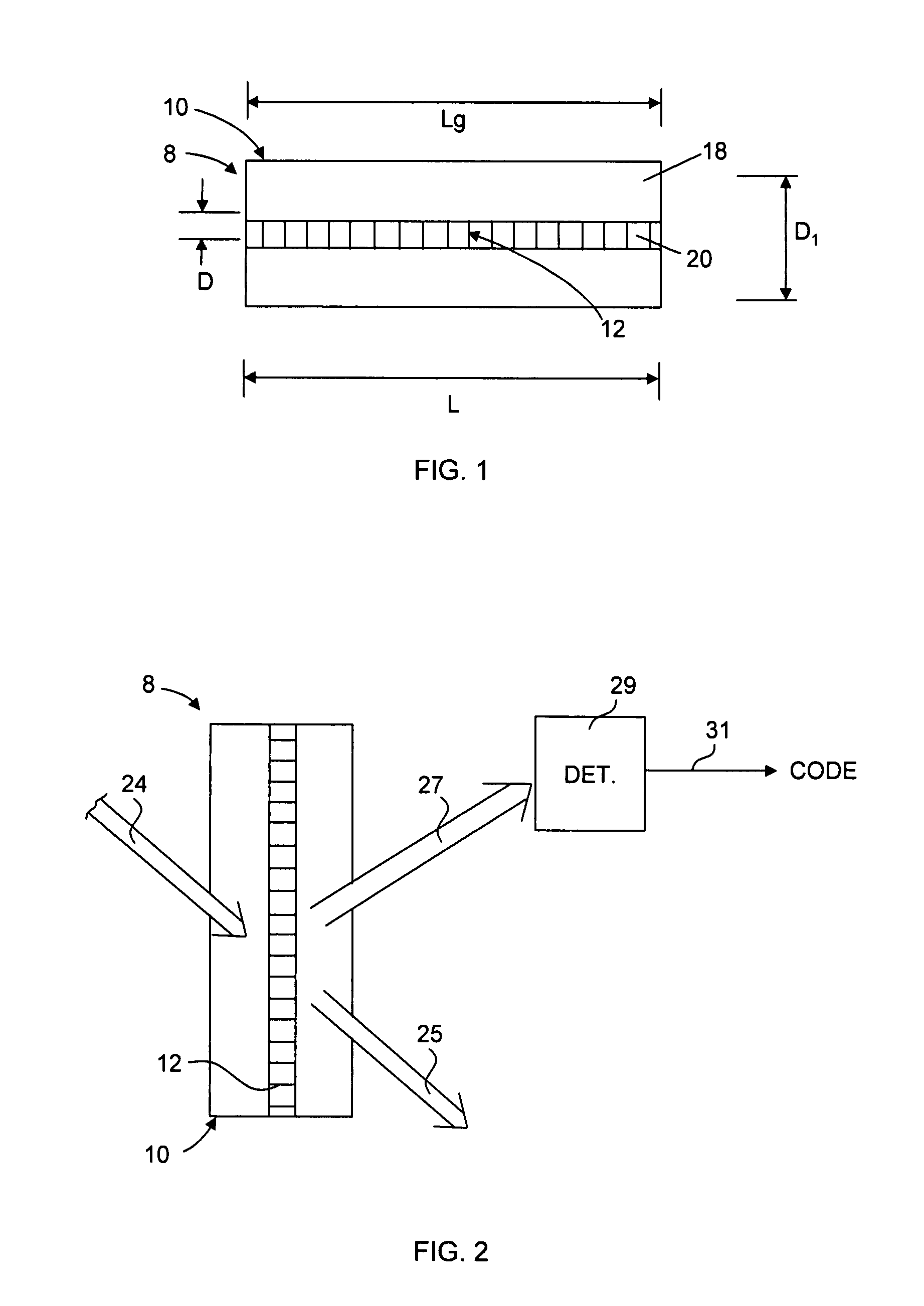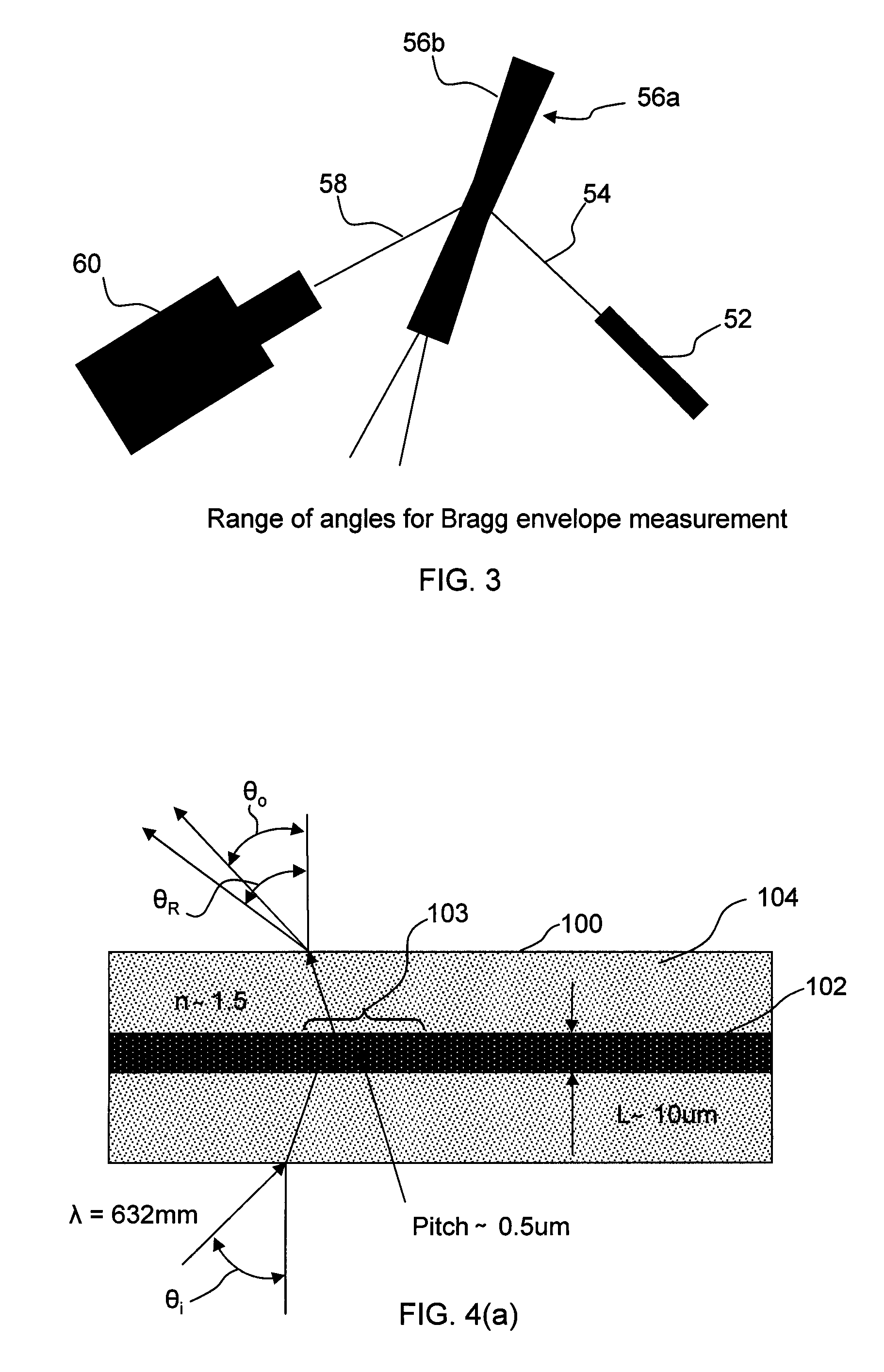Optical identification element having non-waveguide photosensitive substrate with diffraction grating therein
a technology of optical identification element and substrate, which is applied in the field of optical identification element having a diffraction grating, can solve the problems of insufficient radio frequency identification, insufficient different codes, and inability to withstand harsh temperature, chemical, nuclear and/or electromagnetic environments, and achieve the effect of increasing photosensitivity and reducing refractive index
- Summary
- Abstract
- Description
- Claims
- Application Information
AI Technical Summary
Benefits of technology
Problems solved by technology
Method used
Image
Examples
Embodiment Construction
FIG. 1: The Basic Invention
[0044]Referring to FIG. 1, a diffraction grating-based optical identification element 8 (or encoded element or coded element) comprises a known optical substrate 10, having an optical diffraction grating 12 disposed (or written, impressed, embedded, imprinted, etched, grown, deposited or otherwise formed) in the volume of or on a surface of a substrate 10. The optical identification element 8 described herein is the same as that described in Copending patent application Ser. No. 10 / 661,234, filed Sep. 12, 2003, which is incorporated herein by reference in its entirety. The grating 12 may have a periodic or aperiodic variation in the effective refractive index and / or effective optical absorption of at least a portion of the substrate 10. It is important to note that the grating shown and described herein is provided by way of example. The scope of the invention is not intended to be limited to the type or kind of grating 12 in the substrate, the type or kin...
PUM
 Login to View More
Login to View More Abstract
Description
Claims
Application Information
 Login to View More
Login to View More - R&D
- Intellectual Property
- Life Sciences
- Materials
- Tech Scout
- Unparalleled Data Quality
- Higher Quality Content
- 60% Fewer Hallucinations
Browse by: Latest US Patents, China's latest patents, Technical Efficacy Thesaurus, Application Domain, Technology Topic, Popular Technical Reports.
© 2025 PatSnap. All rights reserved.Legal|Privacy policy|Modern Slavery Act Transparency Statement|Sitemap|About US| Contact US: help@patsnap.com



